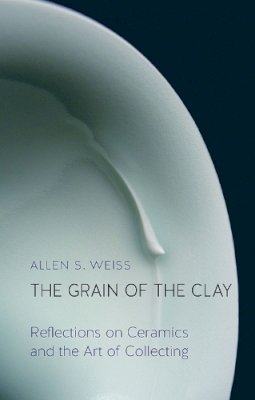
The Grain of the Clay: Reflections on Ceramics and the Art of Collecting
Allen S. Weiss
People collect to connect with the past, personal and historic, to exercise some small and perfect degree of control over a carefully chosen portion of the world. The Grain of the Clay is Allen S. Weiss’s engaging exploration of the meaning and practice of collecting through his relationship with Japanese ceramics. Weiss unfolds their world of materiality and pleasure and the culture and knowledge that extends out of their forms and uses.
Japanese ceramics are celebrated for their profound material poetry, especially in relation to the natural world, and they maintain a unique place in the history of the arts and in the lives of those who collect and use them. The Grain of the Clay deepens our appreciation of ceramics while providing a critical meditation on collecting. Weiss examines the vast stylistic range of ceramics, investigating the reasons for viewing, using and collecting them. He explores ceramic objects’ relationship with cuisine as an art and as a part of everyday life. Ceramics are increasingly finding their rightful place in museums and Weiss shows how this newfound engagement with finely wrought natural materials might foster an increased ecological sensitivity. The Grain of the Clay will appeal to the collector in every one of us.
Product Details
About Allen S. Weiss
Reviews for The Grain of the Clay: Reflections on Ceramics and the Art of Collecting
Crafts magazine
The book is an engaging exploration of the meaning and practice of collecting through his own personal relationship with Japanese ceramics. It provides a critical examination of how and why we collect, encouraging us to deepen our appreciation of the art of ceramic objects.
Ceramic Review
In a book both well-written and highly descriptive, the author transcends the object, the guinomi (a small ceramic sake cup), to question its relationship to all its suroundings. The guinomi comes to represent art and nature . . . I highly recommend this book to those interested in collecting, ceramics or seeking insight into an art collector’s world.
Kyoto Journal
The writer urges readers to make collections part of their lives . . . Collections tell us more about owners, institutions, and even governments than the objects themselves, their acquisition reflecting everything from discerning taste and refinement to venality. This book gives us the chance to ponder all these things – to make an orderly collection of our thoughts.
Japan Times
